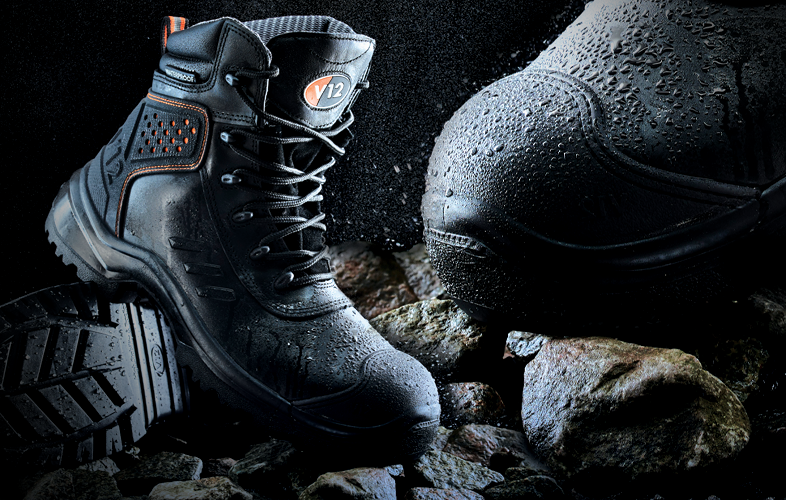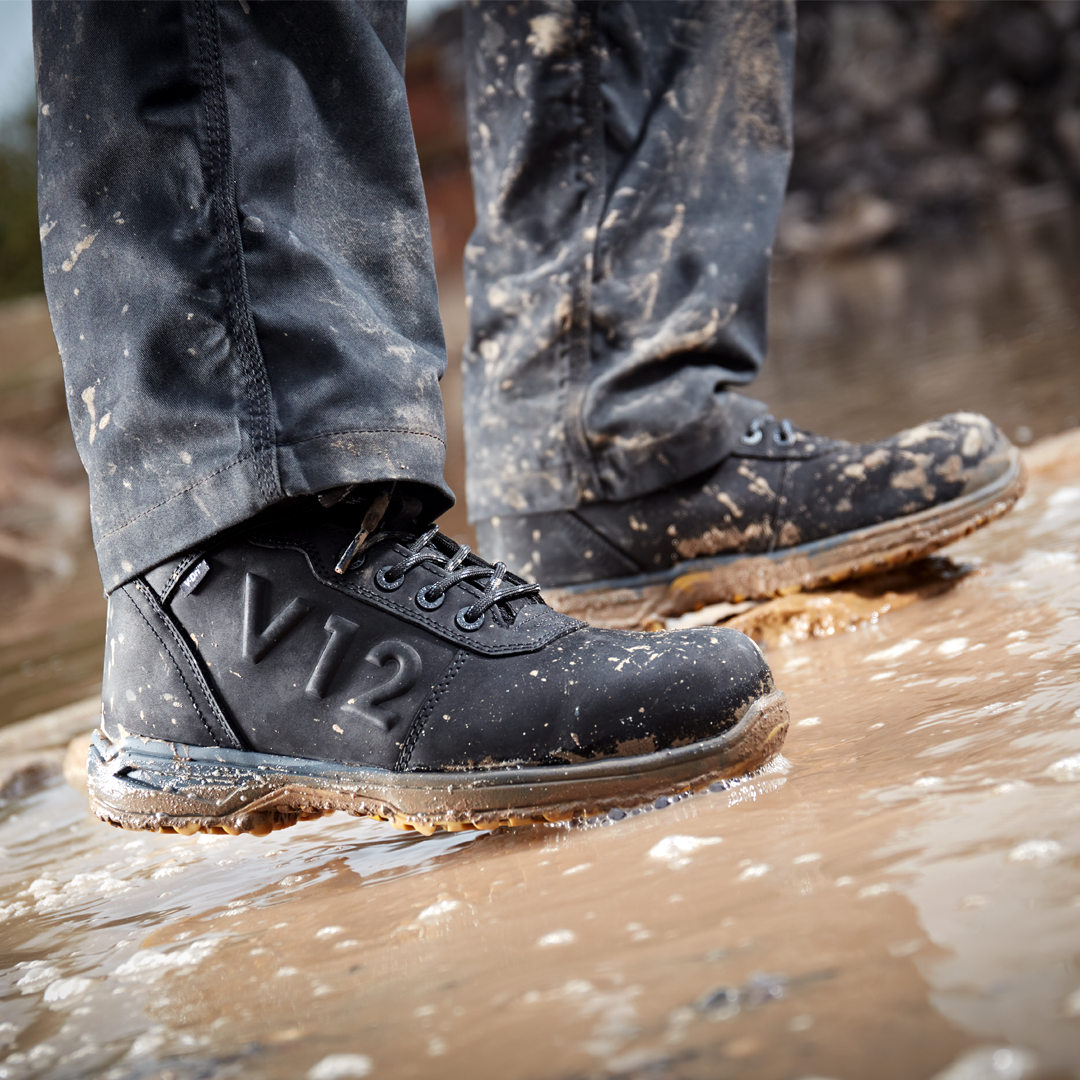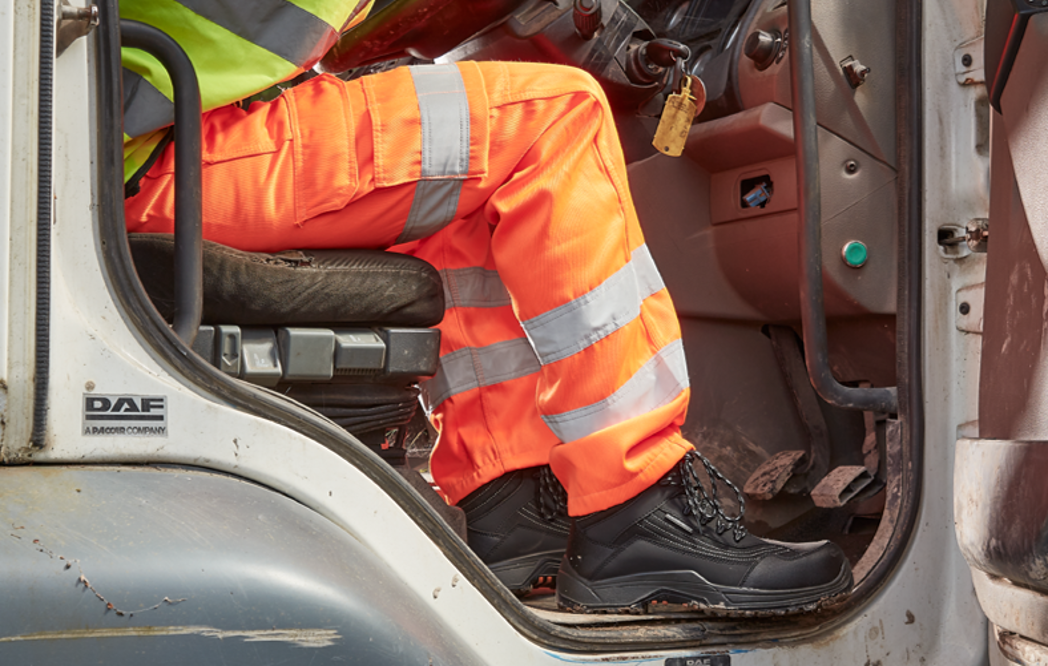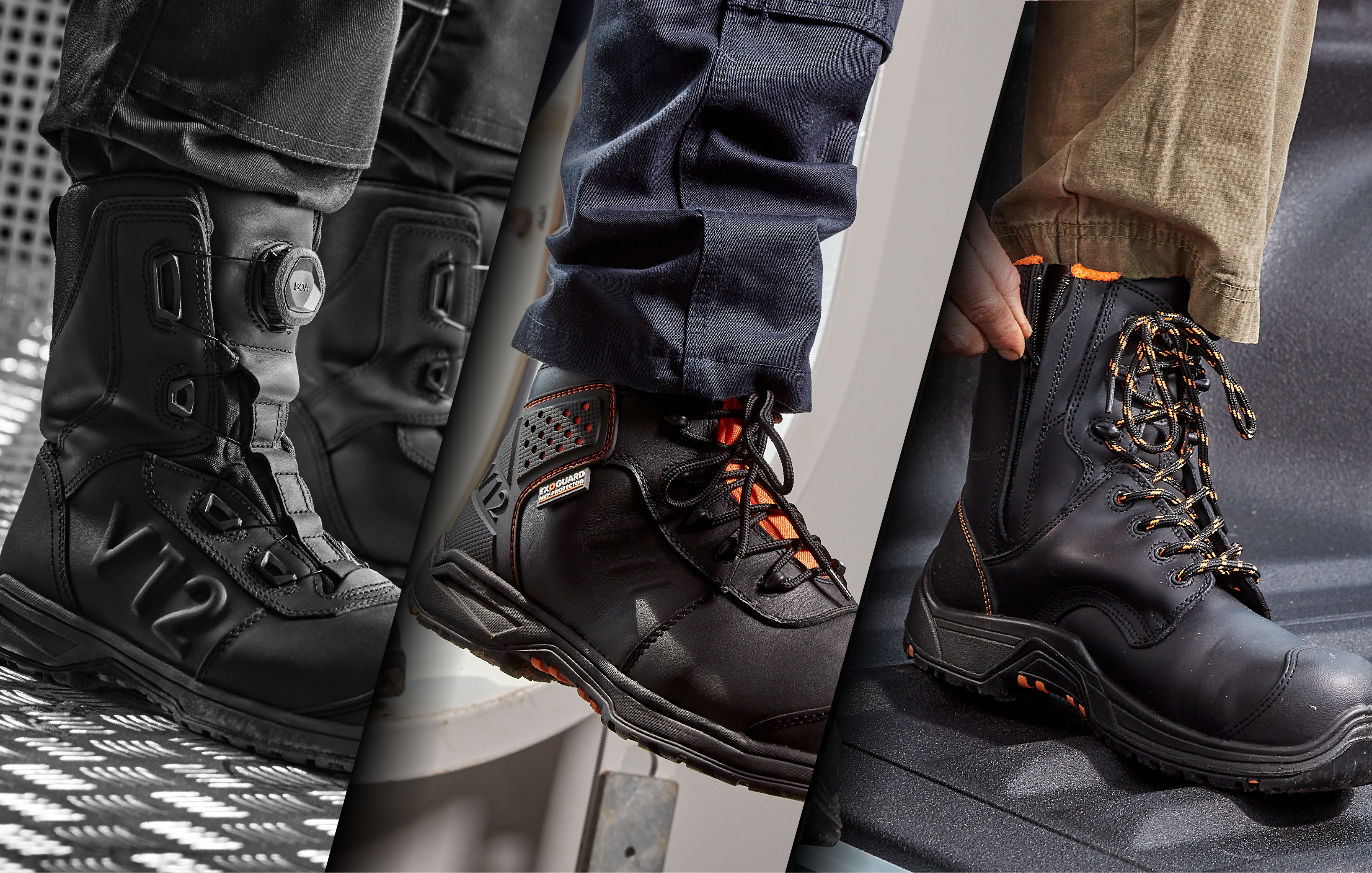As well as this, the amount of water your boot is going to be exposed to will also have an impact on how well its leather repels water. We explore the differences between water resistance and waterproof below, as well as some other interesting and helpful facts about leather and its upkeep.
LEATHER CUTTING
As you’ll probably know, leather is made from animal skin, usually bovine and buffalo, and manufacturers can use it for the upper of a boot in several different ways, because leather definitely isn’t a ‘one size fits all’ material.
 If a manufacturer wants to make the leather (or hide) go further, they can split it horizontally into several layers. This type of leather is called corrected grain, and because the layer is made thinner, it’s less strong and as a result, less water-resistant.
If a manufacturer wants to make the leather (or hide) go further, they can split it horizontally into several layers. This type of leather is called corrected grain, and because the layer is made thinner, it’s less strong and as a result, less water-resistant.
However, a manufacturer can opt to use the whole thickness of the leather, known as full grain. This leather is the premium cut, as it is not split or sanded down, so it stays strong and naturally water-resistant.
Note the word water-resistant rather than waterproof – more on that later.
The E1300.01 Defiant (pictured) has a full grain leather upper, offering natural water-resistance.
The information above is just a quick summary of leathers used in boots. For the full guide, head to this blog to find out all the different types of leather.
LEATHER TREATMENT
Leather can also take on different appearances and levels of strength from the way it gets treated or processed.
For example, crazy horse leather is leather that is given a coating of a special wax which enhances its fibres, gives it a more vintage appearance, and makes it more durable and water-resistant as a result.
V12's best selling dealer boot, V1231 Rawhide, (pictured) is made of oiled crazy horse leather.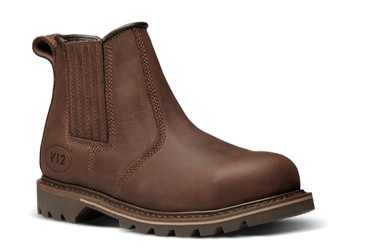
SO, IS LEATHER WATERPROOF OR WATER-RESISTANT?
Leather is not waterproof, only water-resistant. Afterall, leather is skin, which while tough and durable, ultimately just like ours, contains holes (think pores). So, if it is exposed to high levels, water will eventually find its way through.
A boot can only be called ‘waterproof’ if it has a special membrane built into its construction. It is this material, not the leather upper that keeps the foot inside the boot dry. But as mentioned earlier, the thicker the leather (such as full grain), the better job it does at offering a short-term barrier against water.
V12’s Lynx safety boot range (pictured) is a great example of how a boot can stop water getting through to the foot. It uses the V-Dri membrane, which not only acts a barrier to water, but its advanced material allows the foot to stay breathable too. Head to our website’s innovations page here to find out more.
SO, DO I NEED A WATER-RESISTANT OR WATER-PROOF BOOT?
If you’re working in a role where you only encounter light or occasional water such as Telecom Engineering, Forklift Truck Driving or Waste and Recycling, a boot with a leather upper will do a good enough job at keeping out the H20.
But if you’re working outside or around water for extended periods of time such as in Construction, Rail Repairs or Grounds Maintenance, a boot with a waterproof membrane is the only sure way to keep feet dry.
HOW DO I IDENTIFY A WATERPROOF BOOT?
Often, safety boots and shoes will have ‘waterproof’ or 'water-resistant' written on the sole or on the upper, but to make sure you have the right water protection, always look at the tongue. Amongst other details, there will be a series of letters.
%20(2).png?width=381&height=292&name=V12%20waterproof%20symbol%20(e)%20(2).png)
CODE FOR WATERPROOF
If you see the letters WR (circled red in the image) this means that the boot is waterproof.
Now, a common question here is: if it’s waterproof, surely the code should be WP? The code WR makes it seem like the footwear is water-resistant - and we know water-resistant isn’t waterproof...
Some industry experts think this is because no boot is ever truly waterproof, as it'll always have a hole in it – the one you put your foot in!
Code for water-resistant
WRU. This stands for ‘Water-resistant upper,’ and means that the product will repel water to a certain level, but it won’t have a waterproof membrane inside which means it won’t be fully waterproof.
SAFETY STANDARDS HAVE CHANGED
Recently, EN ISO 20345:2011 safety standards were updated to EN ISO 20345:2022, and this has changed the code for water-resistance.
If your current boots are water-resistant, it's likely they'll have a WRU code. However, the new code for water resistance is WPA which stands for water penetration and absorption). Therefore, this symbol could start appearing on safety boots over the next few years as more and more boots get tested to the updated 2022 standards. The symbol for waterproof boots isn't changing.
So, a quick code recap.
- WR = WATERPROOF
- WRU = WATER-RESISTANT
- WPA = WATER-RESISTANT (if tested to the updated EN ISO 20345:2022 standards)
Interested in finding out the full changes to safety footwear standards and how they could effect you? Head to our guide here.
Look out for the following symbol in the specification for V12 boots – it means the boot is waterproof and feet will also stay cool and dry.
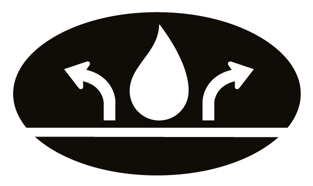
Want more guidance on the best waterproof options based on your trade? Read this blog to find out all you need to know.
Can you waterproof a leather boot?
There are several products including oils, waxes and sprays available to strengthen or sustain leather's resistance to water. We've even heard of people spraying WD-40 on their footwear to add a layer of water-repellence, but as you can imagine, this technique (should you chose to try it) is only appropriate for dark leather.
Other effective leather protection products such as Leatherfood will not only rejuvenate the material, it will also maintain a boot's water-resistant properties.
The key point to remember is that whatever you choose to apply to the leather - be it oil, wax or spray - these substances will only ever enhance the material's water-resistance: it won't make the material waterproof. As we learnt earlier, a leather boot won't be waterproof without a specific waterproof membrane.
WHY HAVE A FULL GRAIN LEATHER UPPER ON A WATERPROOF BOOT THEN?
The combination of premium full grain leather and a waterproof membrane is the ultimate method of keeping water out of footwear. A good-quality leather’s natural water resistance will offer an initial barrier to water, but when it does let water in (which it eventually will if exposed to large volumes) the membrane kicks into action and will ensure the water goes no further. The initial water resistance offered by the leather upper will also mean that the waterproof membrane won’t have to work as hard or so often, and this will extend its life.
If you’re looking for water-resistant footwear, you can explore the full V12 range here.
On the other hand, if you're working in a role where you’re frequently exposed to water, head to our waterproof range to find the right boot to keep your feet dry and comfortable.

